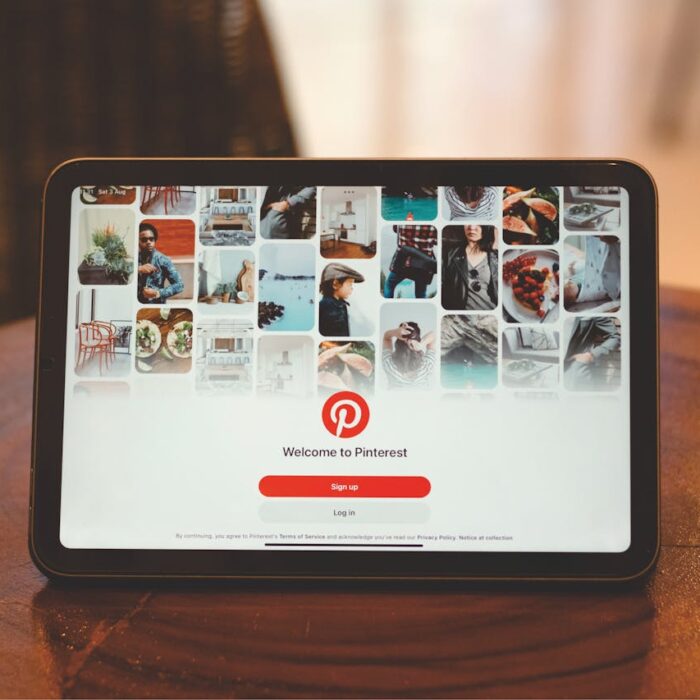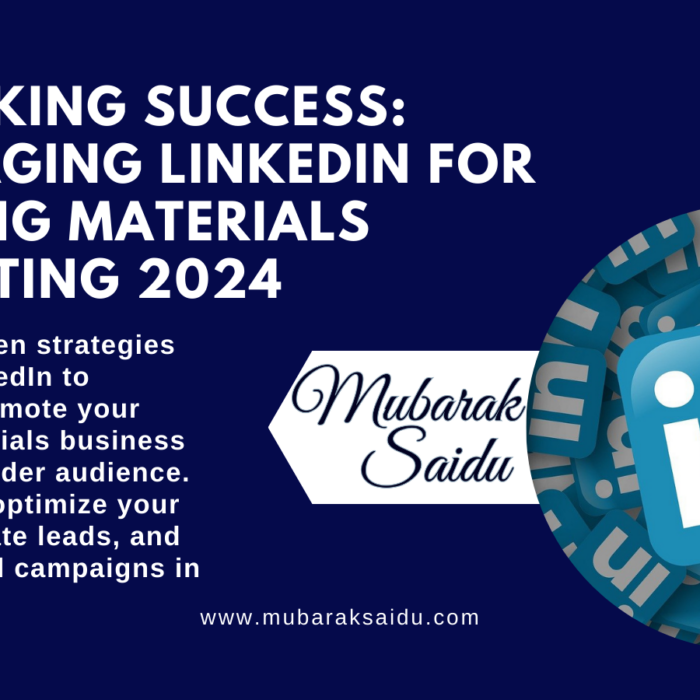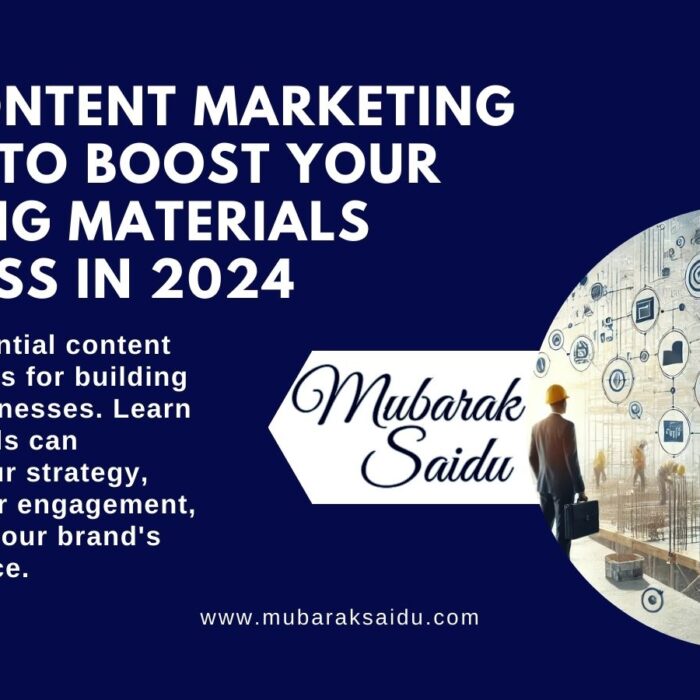
Did you know that the global building materials market is expected to reach $1,587.3 billion by 2030? (Source: Allied Market Research).
As someone who’s spent about a decade in construction marketing, I’ve witnessed firsthand how digital advertising for building materials has transformed how construction materials are promoted and sold.
Gone are the days when word-of-mouth and traditional advertising were enough to keep your business thriving!
Whether you’re selling cement in Lagos or exporting tiles internationally, mastering digital advertising isn’t just an option anymore – it’s essential for survival.
Trust me, I learned this the hard way when the building materials trading company I worked with almost went under in 2023.
But after assuming the role of the digital marketing officer and implementing the strategies I’m about to share, we saw a 300% increase in leads within just six months!
Let’s dive into everything you need to know about digital advertising for building materials.
From social media to search engine marketing, I’ll show you exactly how to reach your target audience and boost your sales!
Understanding Your Target Audience In The Building Materials Sector
Understanding your target audience is absolutely crucial when it comes to effective digital advertising for building materials.
Different customer segments have varying needs, pain points, and buying behaviors that require tailored marketing strategies.
In this section, I’ll break down the key customer types you’re likely to encounter and share insights on regional market differences that can impact your advertising approach.
Different Customer Segments
Listen, I’ve learned something crucial over the years – not everyone who needs building materials shops the same way!
Let me break down the main customer types I’ve encountered and how to reach them effectively.
Construction Companies and Contractors:
These guys are my bread and butter! They’re professional buyers who think differently from regular customers.
When I first started advertising to them, I made the mistake of focusing on pretty pictures – big mistake! What they really want is:
- Detailed technical specifications with actual numbers and performance data
- Bulk pricing information (they hate having to “call for price”)
- Stock availability and delivery timelines
- Certification and compliance documentation
- Credit terms and payment options
Here’s a pro tip: Consider creating a special landing page just for contractors that includes all technical specs upfront. When we did this, our conversion rate jumped by 35%!
Architects and Designers:
Now these folks are a different breed entirely! They’re all about aesthetics and innovation, but don’t forget – they’re also highly technical.
They need:
- High-resolution product images from multiple angles
- CAD files and BIM objects (this was a game-changer for us!)
- Detailed sustainability credentials
- Color options and customization possibilities
- Project case studies and inspiration galleries
I remember working with an architect in Abuja who wouldn’t even consider our tiles until we provided full 3D renderings.
Once we added those to our advertising materials, our architect inquiries tripled!
Individual Homeowners and DIY Enthusiasts:
This group has grown enormously since the pandemic! They’re often first-time buyers who need more hand-holding, but they can become incredibly loyal customers.
They’re looking for:
- Clear, non-technical product descriptions
- Installation guides and video tutorials
- Price comparisons and value propositions
- Warranty information
- Customer reviews and testimonials
- Design ideas and inspiration
Regional Considerations And Market Differences
Let me tell you something interesting – what works in Lagos might completely flop in London!
Understanding regional differences has saved me from countless marketing disasters.
Local Market Dynamics:
In Nigeria, I’ve noticed these specific trends:
- Emphasis on durability due to our climate
- Strong preference for well-known brands
- Price sensitivity but willingness to pay for quality
- Growing interest in eco-friendly materials
- Importance of local availability and quick delivery
International Market Considerations:
When advertising globally, keep in mind:
- Different building codes and standards
- Varying climate requirements
- Cultural preferences in design
- Currency and pricing strategies
- Shipping and logistics capabilities
Essential Digital Advertising Channels For Building Materials
As the digital landscape continues to evolve, building materials businesses need to stay on top of the most effective advertising channels to reach their target audience.
In this part of the guide, I’ll dive into two essential digital advertising pillars – search engine marketing (SEM) and social media advertising.
You’ll learn proven strategies and best practices for each channel to maximize your return on investment.
Search Engine Marketing (SEM)
Google Ads Strategies: Let me share a secret – when I first started with Google Ads, I wasted nearly ₦200,000 on poorly targeted keywords! Now, I know better. Here’s what works:
Commercial Intent Keywords:
- Focus on terms like “buy cement in Lagos” rather than just “cement”
- Include specific product names and specifications
- Target comparison keywords (e.g., “best roofing sheets in Nigeria”)
- Use location-specific terms for better targeting
I’ve found that long-tail keywords like “where to buy waterproof cement in Lekki” have a much better conversion rate, even though they have a lower search volume.
Location-Based Targeting: This is crucial! We:
- Set different bids for different cities based on purchasing power
- Create location-specific ad copy
- Adjust delivery radius based on product type
- Use local landmarks in ad copy where relevant
Mobile Optimization: Here’s something surprising – over 70% of our building materials queries come from mobile devices! Therefore:
- Increase bids for mobile users during peak hours
- Create mobile-specific ad extensions
- Ensure landing pages are mobile-responsive
- Use click-to-call extensions
Display Advertising: This is where visual appeal really matters. Our best-performing display ads have:
- High-quality product images
- Before/after project photos
- Clear pricing and special offers
- Strong call-to-action buttons
Retargeting Strategy: We’ve seen a 40% higher conversion rate with retargeting! Here’s our approach:
- Segment audiences based on viewed products
- Create different ads for different stages of the buying journey
- Set frequency caps to avoid ad fatigue
- Use dynamic product ads showing items they viewed
Social Media Advertising
Social media platforms have become powerful advertising channels, offering building materials businesses a unique opportunity to connect with both B2B and B2C audiences.
From showcasing your products on visually-driven networks like Instagram to fostering industry relationships on LinkedIn, the right social media strategy can significantly boost your brand awareness and lead generation efforts.
In this section, I’ll guide you through selecting the most relevant social platforms for your business and share proven tactics for creating effective social media ad campaigns.
Platform Selection And Strategy:
LinkedIn Marketing: Perfect for B2B connections! We:
- Share technical specifications and certifications
- Post about successful project completions
- Create showcase pages for different product lines
- Target specific job titles in construction
Instagram Strategy: This is our visual portfolio! We focus on:
- Project progression photos
- Installation tutorials
- Design inspiration
- Behind-the-scenes content
- User-generated content from satisfied customers
Facebook Advertising: Our community hub! Here’s what works:
- Educational content about building materials
- Local promotion of special offers
- Customer success stories
- Live Q&A sessions about products
- Community engagement through polls and surveys
Creating Effective Ad Campaigns
Now that we’ve covered the foundational audience and channel knowledge, let’s talk about creating impactful ad campaigns that convert.
The secret lies in developing compelling ad copy and visuals that grab attention and drive action.
I’ll also share tips on optimizing your landing pages to ensure a seamless user experience and higher conversion rates.
Ad Copy And Visuals
Let me tell you about a painful lesson I learned – I once spent two weeks running ads with beautiful product photos but zero sales.
Why? Because I forgot about the power of compelling copy! Here’s what I’ve learned works best:
Compelling Headlines: Your headline is your handshake! Make it count:
- Include numbers when possible (“50% stronger than regular cement!”)
- Address pain points (“Never deal with water seepage again”)
- Use power words (“Guaranteed,” “Professional-grade,” “Premium”)
I’ve found that headlines with pricing work exceptionally well in Nigeria:
- “Quality Portland Cement | ₦6,500 per bag”
- “Buy in Bulk: Free delivery on Orders Over 300 Bags”
- “Premium Tiles Starting at ₦7,500/sqm”
Visual Content Strategy:
This is where most building materials advertisers get it wrong! Don’t just show the product – show what it can do:
Product Photos:
- Multiple angles with good lighting
- Size reference comparisons
- Color variations in different lighting
- Close-up shots showing texture
- Packaging and delivery options
Project Videos:
- Time-lapse construction footage
- Installation tutorials
- Product testing demonstrations
- Customer testimonial videos
- Behind-the-scenes manufacturing process
Before/After Comparisons:
These are pure gold! We saw a 45% increase in click-through rates when we started using these:
- Renovation projects
- Repair work
- Surface treatments
- Waterproofing applications
- Paint jobs
Landing Page Optimization
Listen, this is where the magic happens! Your ad might be perfect, but if your landing page isn’t optimized, you’re throwing money away.
Essential Elements:
Trust me, I’ve tested dozens of variations, and these elements are non-negotiable:
Call-to-Action Buttons:
- Make them stand out with contrasting colors
- Use action-oriented text (“Get Your Quote Now,” “Check Stock Availability”)
- Place them above the fold AND after key information
- Include multiple CTAs for different user preferences (call, WhatsApp, form)
Mobile Responsiveness: This is crucial in Nigeria where over 80% of internet users are on mobile:
- Ensure all buttons are thumb-friendly
- Keep forms short and sweet
- Use collapsible menus for technical specifications
- Optimize images for faster loading
Loading Speed: I once lost a ₦5 million project because our page took too long to load! Now we:
- Compress all images
- Use lazy loading for content below the fold
- Minimize plugins and scripts
- Cache pages for returning visitors
- Use a content delivery network (CDN)
Content Requirements:
Here’s what needs to be on every landing page:
Product Specifications:
- Technical data in easy-to-read tables
- Compliance certificates and standards
- Application guidelines
- Storage requirements
- Warranty information
Pricing Information: Be transparent about:
- Base prices
- Bulk discounts
- Delivery fees
- Minimum order quantities
- Payment terms
Contact Forms: Keep them simple but gather essential info:
- Name and contact details
- Project timeline
- Quantity needed
- Delivery location
- Preferred contact method
Budget Allocation and ROI Tracking
Crafting high-performing digital advertising campaigns is only half the battle – you also need to get your budget allocation and ROI tracking right.
In this section, I’ll share practical insights on setting an appropriate advertising budget, distributing funds across different channels, and measuring the success of your campaigns through key performance indicators (KPIs).
Setting Your Advertising Budget
This is where most people get nervous, but let me share some practical insights from managing millions in ad spend.
Factors to Consider:
Market Analysis:
- Competition level in different regions
- Seasonal demand fluctuations
- Market share goals
- Available stock levels
Product Margins: I always allocate higher budgets to products with:
- Higher profit margins
- Faster turnover rates
- Lower return rates
- Better customer feedback
Seasonal Variations: In Nigeria, we’ve noticed these patterns:
- Higher demand during dry season (November-March)
- Slower sales during Ramadan
- Peak periods before major holidays
- Lower engagement during election periods
Budget Distribution:
Channel Allocation: Here’s how we typically split our budget:
- Google Ads: 40% (higher intent searches)
- Facebook/Instagram: 30% (brand awareness and community building)
- LinkedIn: 20% (B2B connections)
- Display/Remarketing: 10% (keeping warm leads engaged)
Testing Budget: Always reserve 15-20% of your budget for:
- New ad formats
- Different audience segments
- Alternative messaging
- Platform experiments
Measuring Success
Don’t just throw money at ads – track everything! Here’s how we do it:
Key Performance Indicators (KPIs):
Lead Quality Metrics:
- Cost per qualified lead
- Lead-to-sale conversion rate
- Average order value
- Customer lifetime value
- Return customer rate
Campaign Performance:
- Click-through rates (CTR)
- Conversion rates by channel
- Cost per click (CPC)
- Return on ad spend (ROAS)
- Impression share
Common Challenges and Solutions
No marketing journey is complete without encountering a few challenges along the way.
In this final section, I’ll address some of the most common obstacles building materials businesses face when diving into digital advertising, and provide practical solutions to overcome them.
Whether it’s working with limited budgets or navigating technical constraints, I’ve got you covered.
Overcoming Digital Advertising Hurdles
Let me share some real challenges I’ve faced and how we overcame them:
Budget Constraints:
Starting small? No problem!
- Begin with one high-performing channel
- Focus on your best-selling products
- Use micro-testing to find what works
- Leverage user-generated content
- Build email lists for organic marketing
I started with just ₦50,000 monthly and focused entirely on Facebook Ads targeting Abuja contractors. Within three months, we generated enough sales to expand to Google Ads.
Technical Constraints:
Limited Technical Knowledge:
- Start with user-friendly platforms
- Use templates and pre-built campaigns
- Join industry-specific marketing groups
- Take advantage of platform tutorials
- Consider hiring a virtual assistant
Working with Agencies:
If you decide to work with an agency:
- Start with a trial period
- Set clear KPIs
- Request regular reporting
- Maintain access to all accounts
- Learn from their processes
Frequently Asked Questions Digital Advertising For Building Materials
Q: What’s the minimum budget needed to start digital advertising for building materials?
A: From my experience, you can start with as little as ₦50,000 ($60) per month on Facebook Ads or Google Ads. Focus on one platform initially and expand as you see results.
Q: How long does it take to see results from digital advertising?
A: Typically, you’ll start seeing initial results within 1-2 weeks on Facebook As for Google, it’s within 2-4 weeks. However, give your campaigns 3 months to gather data and optimize properly for optimal performance.
Q: Should I hire an agency or manage advertising in-house?
A: This depends on your team’s expertise and time availability. You can start with in-house management but switch to an agency when your budget exceeds ₦500,000 monthly, as they bring specialized expertise.
Conclusion
Digital advertising for building materials might seem overwhelming at first, but it’s worth the effort!
Remember, success doesn’t happen overnight – it took me months of testing and optimization to find what worked best for our market.
Start with one channel, master it, and then expand your presence.
Whether you’re selling cement in Nigeria or exporting tiles globally, these strategies will help you reach the right audience and grow your business.
Don’t forget to regularly analyze your results and adjust your strategy accordingly.
Ready to transform your building materials business through digital advertising?
Start implementing these strategies today, and don’t hesitate to adapt them to your specific market needs!



